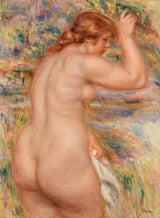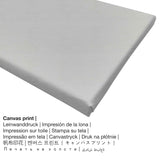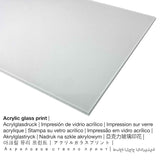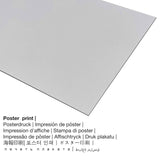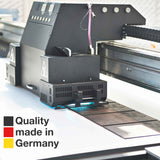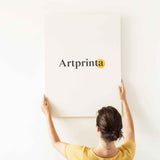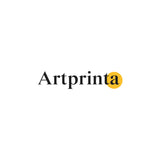Pierre-Auguste Renoir, 1917 - na a Okirikiri ala (na a Landscape) - ọmarịcha nka nka.
Ụtụ gụnyere. Mbupu gbakọrọ na ndenye ọpụpụ.
Nkọwapụta ngwaahịa zuru ezu
Nke a kariri 100 ihe nka afọ afọ aha ya in a Landscape (in a Landscape) nke nwoke na-ese ihe kere Pierre-Auguste Renoir in 1917. The more than 100 year old original had the following size: N'ozuzu: 32 x 24 1/8 na (81,3 x 61 cm) na e ji teknuzu nke mmanụ na kwaaji. Ihe nka a dị na nchịkọta nka dijitalụ nke Ntọala Barnes in Philadelphia, Pennsylvania, Njikota Obodo Amerika. Anyị nwere obi ụtọ ikwu na nke a masterpiece, nke bụ nke ngalaba ọha a na-enye ya site n'ikike nke Site n'ikike nke Barnes Foundation, Merion na Philadelphia, Pennsylvania.Additionally, the artwork has the following creditline: . What is more, the alignment of the digital reproduction is Eserese ma nwee oke onyonyo nke 3: 4, nke na-egosi nke ahụ ogologo bụ 25% mkpụmkpụ karịa obosara. Pierre-Auguste Renoir was a illustrator, painter, sculptor of French nationality, whose artistic style can mainly be classified as Impressionism. The Impressionist painter was born in 1841 in Limoges, Nouvelle-Aquitaine, France and died at the age of 78 na 1919.
Nweta ụdị ebipụta nka ị chọrọ
Anyị na-enye ụdị dị iche iche nha na ihe maka ngwaahịa ọ bụla. Ị nwere ike ịhọrọ nha na ihe kachasị amasị gị n'ime nhọrọ ndị a:
- Aluminom ihe eji eme ihe: Aluminium Dibond prints are metal prints with a true depth effect. The Direct Print on Aluminum Dibond is your perfect start to art prints on aluminum. For the Print On Aluminum Dibond, we print the artpiece on the aluminium composite white-primed surface. The colors are bright and vivid in the highest definition, details are very clear. This direct print on Aluminum Dibond is the most popular entry-level product and is an extremely modern way to showcase fine art reproductions, since it draws attention on the artwork.
- Mbipụta iko acrylic (nke nwere ezigbo mkpuchi iko): An print on acrylic glass, which is sometimes referenced as a UV print on plexiglass, will transform the original artwork into stunning home decoration. The work of art is custom-made thanks to state-of-the-art UV print technology. It makes impressive and vivid color tones. With an acrylic glass art print sharp contrasts and also small details become more identifiable with the help of the very subtle tonal gradation.
- Mbipụta kwaaji: A canvas print, which should not be confused with a painting on a canvas, is an image printed on a UV direct printing machine. It produces the unique effect of three dimensionality. What is more, printed canvas makes a charming and comfortable feeling. Your printed canvas of your favorite work of art will allow you to transform your into a large size collection piece. Canvas prints are relatively low in weight. That means, it is quite simple to hang your Canvas print without the use of any wall-mounts. That is why, a canvas print is suited for all kinds of walls.
- Mbipụta akwụkwọ mmado (ihe kwaaji): The poster is a printed canvas with a nice finish on the surface. It is used for placing the fine art print with a custom-made frame. Please keep in mind, that depending on the size of the poster print we add a white margin between 2-6cm around the painting, which facilitates the framing with a custom frame.
Ederede iwu: We try our best to depict our art products with as many details as it is possible and to illustrate them visually on the respective product detail pages. Nonetheless, the colors of the print products and the imprint can diverge marginally from the representation on the device's monitor. Depending on your screen settings and the nature of the surface, not all color pigments can be printed 100% realistically. In view of the fact that all the art reproductions are processed and printed manually, there might also be minor differences in the motif's exact position and the size.
Nkọwa ihe ahaziri ahazi
| Nkewa bipụta: | nka nka |
| Usoro mmeghari: | dijitalụ mmeputakwa |
| Produzọ mmepụta: | mbipụta dijitalụ (Mbipụta UV ozugbo) |
| Mmalite ngwaahịa: | German mere |
| Stockdị ngwaahịa: | a na-achọ |
| Eji ngwaahịa emebere: | nka mgbidi, ụlọ ihe osise nka |
| Ndepụta: | usoro eserese |
| Oke akụkụ: | 3:4- ogologo: obosara |
| Nkọwa: | ogologo bụ 25% mkpụmkpụ karịa obosara |
| Akwa mmeputakwa dị: | Mbipụta iko acrylic (nwere ezigbo mkpuchi iko), mbipụta ọla (aluminium dibond), mbipụta akwa akwa, mbipụta akwụkwọ mmado (akwụkwọ kwaaji) |
| Nhọrọ nke akwa akwa n'elu etiti ihe ndọtị (mbipụta akwa akwa): | 30x40cm - 12x16", 60x80cm - 24x31", 90x120cm - 35x47", 120x160cm - 47x63" |
| Acrylic glass print (nwere ezigbo mkpuchi iko) nhọrọ: | 30x40cm - 12x16", 60x80cm - 24x31", 90x120cm - 35x47", 120x160cm - 47x63" |
| Mpempe akwụkwọ mmado (akwụkwọ kwaaji) nha: | 30x40cm - 12x16", 60x80cm - 24x31", 90x120cm - 35x47" |
| Nhọrọ nha nha nke Dibond (ihe alumnium): | 30x40cm - 12x16", 60x80cm - 24x31", 90x120cm - 35x47" |
| Igwe onyonyo: | oyiri nka na-enweghị isi |
Ozi nka ahaziri
| Aha eserese ahụ: | "in a Landscape (in a Landscape)" |
| Nhazi nke ọrụ nka: | sere |
| Category: | nkà nke oge a |
| Time: | 20th narị afọ |
| Afọ nka: | 1917 |
| Ogologo afọ nka nka: | gbara afọ 100 |
| Agba na: | mmanụ na kwaaji |
| Akụkụ izizi (ọrụ nka): | N'ozuzu: 32 x 24 1/8 na (81,3 x 61 cm) |
| Ụlọ ihe ngosi nka: | Ntọala Barnes |
| Ebe ngosi nka: | Philadelphia, Pennsylvania, Njikota Obodo Amerika |
| Webụsaịtị ihe ngosi nka: | Ntọala Barnes |
| Ụdị ikike nka: | ngalaba ọha |
| Site n'aka: | Site n'ikike nke Barnes Foundation, Merion na Philadelphia, Pennsylvania |
Tebụl onye na-ese ihe
| Aha onye nka: | Pierre-Auguste Renoir |
| Aliases: | Renoir August, רנואר פייר אוגוסט, Renoar Pjer-Ogist, Renoir, Renoir Pierre Auguste, רנואר אוגוסט, renoir a., a. renoir, Pierre-Auguste Renoir, August Renoir, p.a. renoir, firmin auguste renoir, renoir p.a., pierre august renoir, Pierre Auguste Renoir, Renoir Auguste, Auguste Renoir, Renuar Ogi︠u︡st, Renoir Pierre August, Renoir Pierre-Auguste |
| Gender: | nwoke |
| Obodo onye nka: | French |
| Ọrụ nke onye na-ese ihe: | onye na-ese ihe, onye na-ese ihe, onye na-ese ihe |
| Country: | France |
| Otu nka: | omenkà nke oge a |
| Ụdị nka: | Mmetụta |
| Afọ ọnwụ: | 78 afọ |
| Amụrụ n'afọ: | 1841 |
| Ebe amụrụ onye: | Limoges, Nouvelle-Aquitaine, France |
| Nwuru: | 1919 |
| Obodo ọnwụ: | Cagnes-sur-Mer, Provence-Alpes-Cote d'Azur, France |
Ederede a bụ ikike ọgụgụ isi ma chekwaa ya site na nwebisiinka ©, Artprinta (www.artprinta.com)
Original information about the artwork by the museum's website (© Copyright - by Barnes Foundation - Ntọala Barnes)
Renoir believed that appealing to the viewer's tactile sense was essential when painting the naked body. "A nude is not done until I feel I can reach out and touch it", he said. In this painting produced close to the end of his life, Renoir seems to insist on the physicality of his figure. Velvety flesh, created with layers of thin glazes, fills the canvas; the woman's body seems ready to spill into our space.

